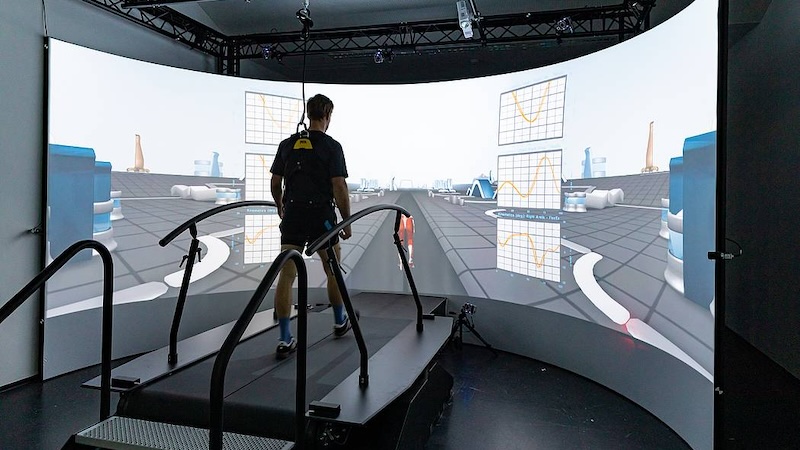Anyone who frequently taps on their smartphone while walking risks X-legs. This is because the human body would fall into a kind of safety gait. This is the result of a study by the University of Applied Sciences Campus Vienna.
How does smartphone use affect our gait and our musculoskeletal system? Researchers at the University of Applied Sciences Campus Vienna looked into this question as part of a recent study.
The result: in their in-house movement laboratory “GRAIL” (Gait Realtime Analysis Interactive Lab), they were able to prove that using a smartphone while walking leads to a change in the gait pattern. This, in turn, could have long-term effects on the body.
X-legs due to smartphone tapping while walking
According to the researchers, our bodies fall into a kind of safety gait when we tap on our smartphones while walking. As a result, our steps become smaller and wider. This way of walking reduces the risk of falling. However, it also leads to greater strain on the knees.
As part of their study, the researchers observed the movement sequences of 27 study participants. The test subjects had to walk on a treadmill in front of a large screen. Street noises could be heard in the background. They were asked to solve a math problem once in their heads and once with the help of their smartphones.
The researchers then documented and analyzed the respective movement patterns. The result: tapping on the smartphone while walking changes the gait. The result was a minimal X-position in the knee joints.
This is how smartphones change
The researchers also refer to smartphone use while walking as “text walking”. The shorter and wider steps put strain on the outer sides of the knee joints. This could even lead to cartilage and meniscus damage. However, so-called X-legs seem to be the least of the problems.
People who use smartphones and similar devices while walking are more likely to have an accident. This is the result of a study by Allianz Versicherung. According to the study, typing on a smartphone while walking doubles the risk of an accident.
Anyone who looks at their smartphone a lot also risks a so-called cell phone neck. The reason: the further and more often we look down, the more weight the neck has to bear. This kind of constant strain, combined with a lack of movement, can have painful consequences. Tension as well as headaches and back pain can be the result.










